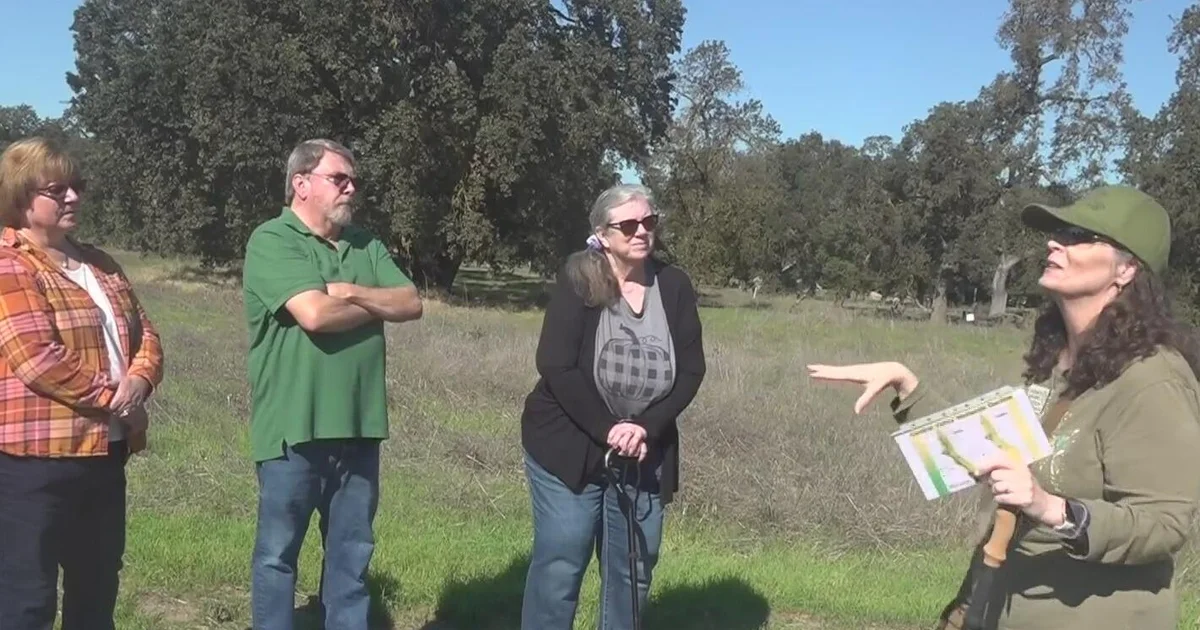Copyright CBS News

The Shumway Oak Grove Regional Park in Stockton launched an autumn nature walk for the community to get an inside look at how important California's historic oak trees are, especially during the fall. Carolyn Dougherty is a volunteer naturalist at Oak Grove Nature Center and led a group of people on Sunday morning for a new nature walk, which kicked off this fall: "Autumn Among the Oaks". "During the autumn, we talk about what's happening here in the autumn, like our oak galls and our acorns," Dougherty said. "And what animals are doing and what our Yokuts tribes were doing at this time of year, which was gathering acorns to store for the winter." Dougherty is a retired educator and a big advocate for lifelong learning, not just for herself but to share knowledge with others -- especially at this Oak Grove preserve. "We are a preserve," Dougherty said. "And I'd like people to understand why the importance of preserving the oak groves isn't just because of the trees but all of the species that each tree supports." Dougherty said these oaks are keystone species, supporting up to 4,000 different species like California scrub-jays, acorn woodpeckers, California ground squirrels, and Western lizards. "This is my second time taking this tour because I find it fascinating," Dr. Julie Bates-Livesay, a Stockton resident, said. "And so I got to learn more about galls that grow on oak trees that we make ink out of them, that historic documents were written in the ink produced by them." Dougherty said the Yokuts Trail and Miwok Trail were named to pay homage to the ancestors of the area. And as these leaves fall this season, one of the goals of the tour is to have an appreciation for California's rich history. "To know where we came from and just to have a deeper appreciation of native California history…the importance of our landscape and what our native landscape contributed to our indigenous people, and how it transformed with our agriculture and industry," Dougherty said. Dougherty says 80% of these groves in California are unprotected and can be affected by development and agriculture. "So, each time that we can protect a little pocket of it is important to us," Dougherty said. "Come out and be in nature," Dr. Bates-Livesay said. "We're very fortunate to live where we live, to have access to this kind of a nature environment. Whether it be here, at Oak Park, or in Lodi, at Lodi Lake, or a little further up the hill at one of our California or National Parks. We're blessed here in California to have that kind of access." With each step the local community members took with the tour, they learned to appreciate the oaks, their history, and the steps it takes to preserve the land amidst this season. "To see the park being utilized, from everything from frisbee golf to these kinds of educational tours is a big thing," Dr. Bates-Livesay said. "I think it's really important to understand where we came from, and that our part in this life is to be a good steward," Dr. Bates-Livesay said. "And the only way you can be a good steward is if you even know that nature exists and that you're a part of that." There will also be a Sandhill Crane Festival in Lodi next week. Dougherty told us these habitats were once threatened, but with the help of conservationists and local farmers working together, she says the cranes are coming back. There are tours for different seasons with different topics related to the season, along with a nature center with different programs. Some of those include walks, school tours, an "Astronomy in the Park" monthly event to see stars, and hands-on learning for people of all ages. For Dr. Bates-Livesay and her friends, they capped off the tour with a picnic among the oaks.



